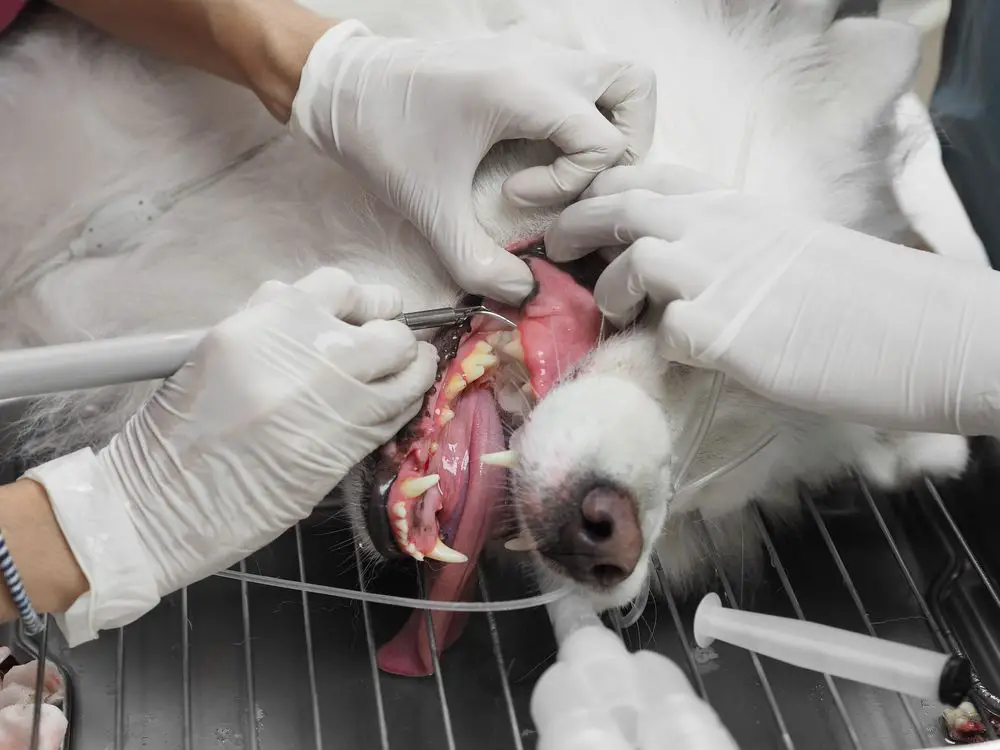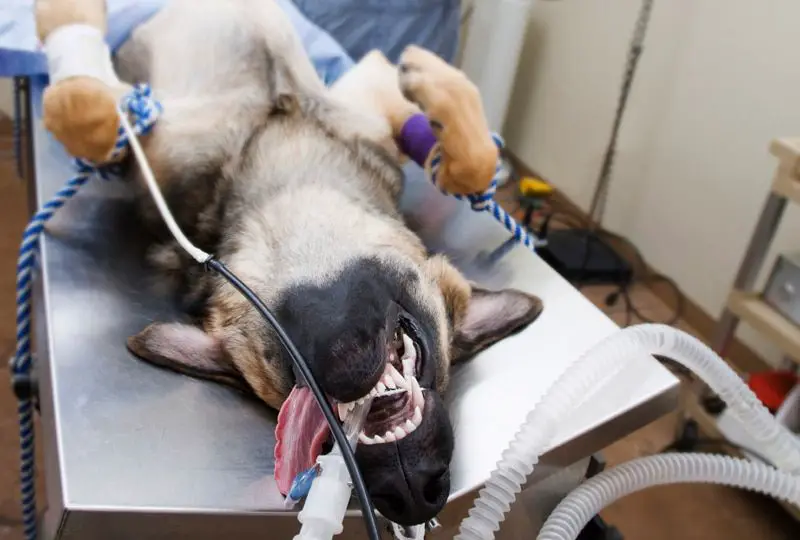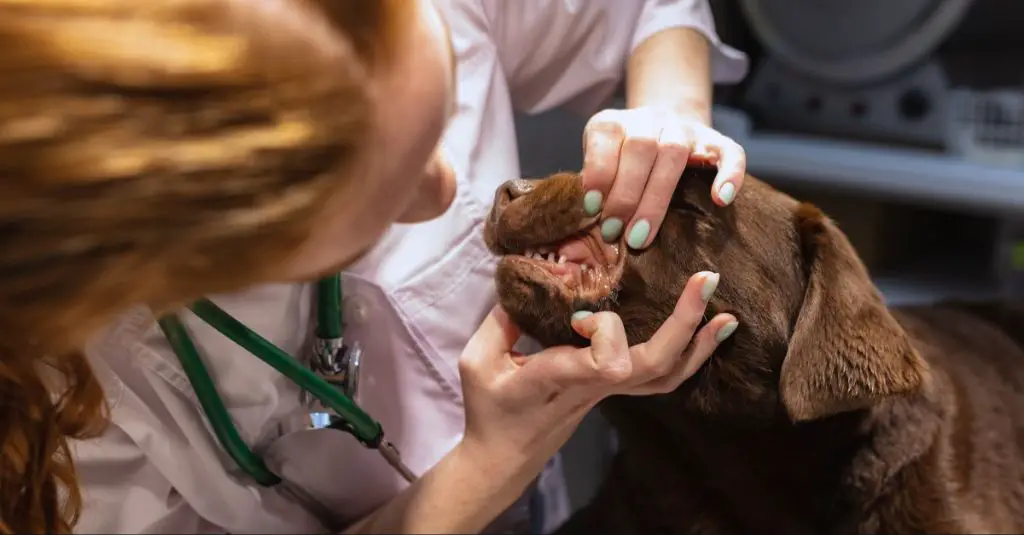Introduction
In recent years, there have been increasing reports of dogs dying after undergoing dental cleanings and procedures. Understandably, this has raised major concerns among dog owners about the risks and safety of canine dental cleanings. While dental cleanings are an important part of dog health and preventative care, they do come with some inherent risks. Anesthesia is necessary for thorough cleanings, and any time anesthesia is used, there is a small but real risk of complications and death.
According to veterinary studies, the risk of death during or after anesthesia is around 0.15% on average for healthy dogs. However, some breeds and older dogs are at higher risk. While the percentage seems small, it’s very upsetting and tragic for any pet owner to lose their beloved dog during a routine procedure. That’s why it’s so important for owners to find experienced vets, ask questions, and take steps to minimize risks.
This intro covers the reports of dogs dying after dental cleanings and why it’s raising concerns and considerations for owners. Let me know if you would like me to modify or expand the introduction section further.
Overview of Dental Cleanings
A canine dental cleaning is a routine procedure performed to maintain good oral health in dogs. During the procedure, the dog is placed under general anesthesia to allow for a thorough examination and cleaning of the teeth and gums.
The vet or veterinary technician will scale the dog’s teeth using both hand and ultrasonic scalers to remove tartar and plaque buildup above and below the gumline. Polishing with a rubber cup follows to smooth the surfaces of the teeth. Fluoride may be applied to help strengthen tooth enamel.
Veterinarians typically recommend regular dental cleanings for dogs every 6-12 months depending on the individual dog’s health profile. More frequent dental cleanings may be needed for dogs prone to rapid calculus buildup.
A thorough dental cleaning allows the vet to identify and address any oral health issues. It also helps prevent bacteria accumulation, gum disease, tooth decay and loss, and other medical conditions linked to poor canine dental health.
Risks and Complications
Any veterinary procedure that requires anesthesia carries inherent risks. Anesthesia essentially induces a temporary coma to prevent pain and reflexes during procedures. However, suppressing the central nervous system can lead to potentially serious complications.
Some of the most common risks and complications associated with canine dental cleanings under anesthesia include:

- Breathing issues – Anesthesia can sometimes lead to impaired breathing or even apnea (cessation of breathing). This is why intubation and monitoring oxygen levels is critical.
- Low blood pressure – Anesthetics can reduce blood pressure to dangerous levels. Monitoring blood pressure and administering IV fluids helps counteract this effect.
- Abnormal heart rhythms – Some anesthetics may impact heart function, causing arrhythmias. An ECG monitors heart activity during procedures.
- Drug reactions – Dogs may have unexpected reactions or sensitivities to anesthetic agents. Using the lowest effective dose helps avoid this.
- Hypothermia – Anesthesia impairs the body’s ability to regulate temperature. Warming blankets and IV fluids mitigate this effect.
- Aspiration – When intubated, it’s possible for dogs to inhale stomach contents or saliva into the lungs.
While every precaution is taken, anesthesia-related complications can rarely result in death. However, the risks are quite low with today’s modern protocols – less than 1 in 100,000 for healthy dogs having elective procedures.
Death Rates and Causes
While the vast majority of pets undergo dental cleanings without incident, there is a small risk of death associated with the procedure. Sources estimate the mortality rate is around 0.12% for healthy dogs and 0.15% for healthy cats undergoing a routine cleaning. This means approximately 1 in 1000 healthy pets die under anesthesia each year.
For pets with underlying medical conditions, the death rate under anesthesia may be higher – up to 1.33% according to some estimates. Pets over the age of 10 also have an increased mortality risk.
Common causes of death during or after dental cleanings include:

- Anesthetic reactions – adverse responses to anesthesia drugs
- Respiratory depression – inadequate breathing under anesthesia
- Underlying conditions – undiagnosed heart/lung/kidney issues
- Blood pressure drops – hypotension while under anesthesia
- Hypothermia – low body temperature during procedure
- Post-op complications – infection, bleeding, swelling
While any surgery involves risks, steps can be taken to minimize dangers. Work with your vet to screen for health issues beforehand and use proper anesthesia protocols tailored to your pet’s needs.
Breed and Age Risk Factors
Certain breeds and ages of dogs may be at higher risk for complications or death during dental procedures involving anesthesia. This is because some breeds have anatomical differences that make them more prone to breathing issues. Additionally, very young and very old dogs often have weaker organ function that may make it harder for them to metabolize anesthesia.
Brachycephalic breeds, like Pugs, Bulldogs, and Boston Terriers, are at increased risk due to their shortened airways and tendency for respiratory distress. Their soft palates can obstruct breathing under anesthesia, and they may require special equipment like laryngeal mask airways during procedures. Their small nostrils and elongated soft palates puts them at higher risk for overheating and breathing obstruction under sedation.
Large breed dogs are also susceptible due to some anatomical differences. They tend to retain more body heat during procedures, and have some cardiac sensitivities that require adjustments to anesthesia protocol. Great Danes and Irish Wolfhounds, for example, need less anesthesia overall due to their size and drug sensitivity.

Very young dogs under a year, and geriatric dogs over age 10, should be carefully screened. Their organ function is still developing or declining, which affects their ability to be sedated safely. Lower drug doses are usually given to allow their kidneys, liver and heart to handle the effects.
It’s important to inform your vet of your dog’s breed and age ahead of any procedure requiring anesthesia. They will be able to make adjustments to lower risk based on your pet’s specific attributes and needs.
Evaluating Your Vet
When considering dental cleanings or any procedure requiring anesthesia for your dog, it is crucial to thoroughly vet the veterinarian and facility. Make sure your vet has substantial training and experience specifically in dog anesthesia administration and monitoring. Look for accreditation with the American Animal Hospital Association (AAHA), which indicates the vet meets high standards for small animal care. The AAHA accredits over 1,000 small animal hospitals across North America that must pass rigorous evaluations every 3 years. Choose an AAHA accredited facility for the safest, highest quality veterinary care. Beyond accreditation, ask trusted dog owners for vet recommendations and research online reviews.
Specifically ask your vet how many dental cleanings they perform each month and their anesthesia protocol. Inquire about their monitoring procedures during and after surgery. Confirm they are continually monitoring oxygen levels, heart rate, breathing, and other vital signs. Make sure a dedicated veterinary technician or nurse is monitoring your dog throughout anesthesia, not just the veterinarian multitasking on other tasks. Ensure your vet explains the entire process and answers all your questions to give you peace of mind. Take the time to find an experienced, reputable veterinarian you trust to minimize risks and provide optimal care.
Pre-Procedure Testing
Before undergoing anesthesia and a dental cleaning, vets may recommend various pre-procedure tests for dogs. This allows them to establish a health baseline and identify any underlying conditions that could increase anesthetic risk.
One of the most common pre-procedure tests is baseline bloodwork. AComplete Blood Count (CBC) and blood chemistry panel can detect issues like anemia, dehydration, kidney disease, and liver disease. Catching these ahead of time enables vets to stabilize dogs beforehand when possible or modify the anesthesia plan to minimize risks.
For higher-risk dogs, additional screening like urinalysis, blood pressure measurements, and chest x-rays may be prudent. These can reveal further health issues like heart disease, which the vet can then factor into their anesthesia plan.
Electrocardiograms (ECGs) are another valuable pre-procedure test, especially for senior dogs or breeds prone to heart conditions. ECG readings provide important insights into heart rhythm and function that allow anesthesia to be tailored appropriately.
While every procedure requires some risk assessment, taking steps to establish a health baseline through testing enables vets to provide the safest dental care plan possible. This is key to minimizing the small but real risks that exist with canine dental cleanings and other procedures requiring anesthesia.
Anesthesia Protocols
Proper anesthesia administration is crucial for safe dental cleanings in dogs. The anesthesia protocol should be tailored to each individual dog based on their health status and risk factors. This involves carefully calculating doses of pre-anesthetic medications, induction drugs, inhaled anesthetics, and pain management medications. Continuous monitoring of vital signs – like heart rate, blood pressure and oxygen levels – allows veterinarians to adjust anesthesia depth accordingly.
Intravenous catheters provide venous access in case emergency drugs are needed. IV fluids help maintain normal blood pressure and prevent dehydration. Oxygen supplementation, especially for at-risk dogs, is recommended to prevent hypoxemia. Adjusting anesthesia based on patient response and having emergency protocols in place allows for the early detection and treatment of any complications.
Dog owners should discuss anesthesia options with their veterinarian and understand the protocols used. While no anesthesia is completely without risk, proper dosing and vigilant monitoring by trained staff is key to reducing adverse events. Insist on up-to-date equipment, such as pulse oximetry and blood pressure monitors, and IV catheter placement. Follow all pre-anesthetic instructions for fasting and medication withdrawal. Providing a full medical history helps vets determine any special needs. With thoughtful preparation and care, dental cleanings can be performed safely under anesthesia.
Post-Op Monitoring
Close monitoring after a dental cleaning procedure is crucial to watch for potential complications. Some vets will keep dogs overnight for observation. This allows staff to regularly check vital signs, ensure anesthesia has fully worn off, and quickly catch any issues.
Even for outpatient procedures, many vets suggest pet parents monitor their dog closely at home the first night. You may need to wake your dog every few hours to check responsiveness and watch for signs of continued effects from anesthesia. Stay alert for abnormal breathing, low body temperature, vomiting or coughing up any fluid, pale gums, weakness/lethargy, or collapse.
If you notice any concerning symptoms or just feel something may be wrong, immediately contact your vet or an emergency animal hospital. Prompt treatment greatly improves outcomes for any post-op complications. Having a plan for emergency vet visits can give peace of mind if issues arise.
While major complications are very rare with modern dental cleanings, close monitoring in the hours after can catch problems early. Working with your vet on appropriate post-op care is key to your dog’s safety.

Prevention Tips
There are several things dog owners can do to help prevent dental disease and the need for full dental cleanings under anesthesia:
- Brushing your dog’s teeth daily using a toothpaste formulated for dogs. This helps remove plaque before it turns into tartar.
- Offering dental chew toys and treats. Chewing scrapes plaque off teeth and the abrasive texture helps remove tartar buildup.
- Feeding dry kibble instead of wet food. The crunchy texture helps scrape teeth clean as your dog chews.
- Getting your dog’s teeth professionally cleaned by your vet every 6-12 months. Vets use special tools to scale plaque and tartar below the gumline that brushing can’t reach.
- Monitoring your dog’s oral health between cleanings, and requesting pre-operative bloodwork if any dental disease is detected. This allows issues to be addressed before they escalate.
By providing regular at-home dental care for your dog and professional cleanings as needed, you can reduce plaque buildup and decrease the likelihood of complications from dental procedures down the road.